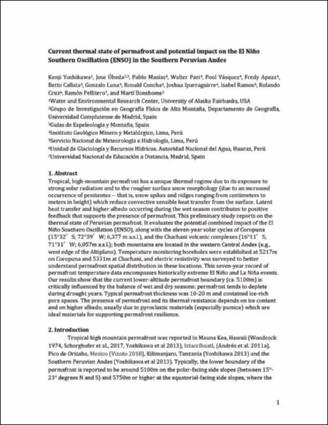Please use this identifier to cite or link to this item:
https://hdl.handle.net/20.500.12544/2630Files in This Item:
| File | Description | Size | Format | |
|---|---|---|---|---|
| Yoshikawa-Current_thermal_state_of_permafrost-2018.docx | Reporte técnico | 89.68 kB | Microsoft Word XML | View/Open |
| Yoshikawa-Current_thermal_portada.jpg | 155.74 kB | JPEG | View/Open |
This item is licensed under a Creative Commons License












